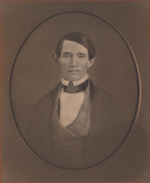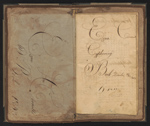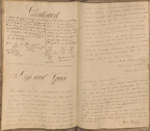Introduction
Ezra Cornell referred to himself as a farmer and mechanic who had spent some time working in the telegraph industry. His ambition and imagination, however, were not so prosaic. Through skillful work, uncommon tenacity, and fortuitous circumstances, he amassed a fortune. As soon as it became clear that it was a fortune, he promptly rejected conventional practice and sage advice, and directed that those riches be used to found a unique university: a comprehensive and practical institution of higher learning dedicated to all forms of intellectual endeavor.
Ezra Cornell had visions of great public prosperity and universal fairness, envisioning America as a place where technology, wealth, and altruism could coalesce to benefit all. He spent much of his life far from his home in Ithaca: walking through the antebellum South, selling plows in Maine, supervising the construction and operation of lines for the telegraph industry, and serving as a New York State legislator in Albany. Throughout these endeavors, he wrote long and detailed letters home and kept a diary.
Similarly, as Ezra Cornell and Andrew Dickson White conceived and planned Cornell University, their correspondence closely documented the evolution of their dreams and their preparations for the University’s opening and operation. Ezra’s letters reveal a practical but visionary man whose life both exemplified and shaped nineteenth-century America. His keen observations provide a firsthand account of the country’s cultural development, the profound effects of industrialization and the Civil War, and his own role in developing the century’s principal communication technology and its most innovative educational experiment.
 |
Ezra Cornell. Chalk drawing after a daguerreotype, ca. 1845. [zoom] |
 |
Ezra Cornell’s Cyphering Book [zoom] In 1823, at the age of sixteen, Ezra Cornell acquired eighty-five folio sheets of handmade paper and bound them together within flexible board covers. He proceeded to create a book that contains practical rules and exercises in arithmetic, beginning with simple addition and subtraction and going on to fractions, compound interest, weights and measures, the equation of payments in state and federal, American and British money, annuities, and barter. The last exercise is dated February 13, 1824; some pages later a new heading reads, “Loss and Gain.” Thirty-five years later, at the age of fifty-three, Cornell returned to the book and made several additional annotations. |
 |
Ezra Cornell’s Cyphering Book [zoom] Transcription: Loss and Gain
The above, or the examples in the above rules, though not entered in this book I have been practicing ever since the above was written, and it has been a life long struggle to see which would preponderate. In 1844, there was a balance of perhaps of a couple of thousand dollars on the cr side. In 1854 the contest was a doubtful one, and a debt with which I was then incumbered amounting to $50,000 would probably have swept the board if the game had been stoped at that period, but the contest has been continued, with increasing success for the side of gain and at the present period Feb. 1, 1860, that mountain of debt has mostly been paid at the rate of 100 cents on a dollar with 7 per ct interest added, and a yearly income of $15,000, seems to be a reliable guarenty that the cr side has won the victory. Forest Park, Ithaca, Tompkins Co. N.Y. February 1, 1860 Ezra Cornell Ithaca, Aug. 29, 1864 The favorable change indicated above which promised to give a favorable turn to the life long Loss and Gain a/c continues. The yearly income which I realize this year will exceed One Hundred Thousand dollars. My last quarterly dividend on stock in the Western Union Tel Co was $35,000, July 20, 64. The Div for Oct quarter will be as large. My greatest care now is how to spend this large income, to do the most good to those who are properly dependent on [me]—to the poor and to posterity. Ezra Cornell |